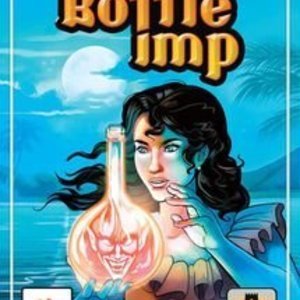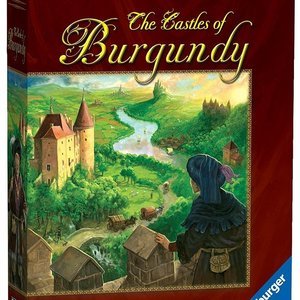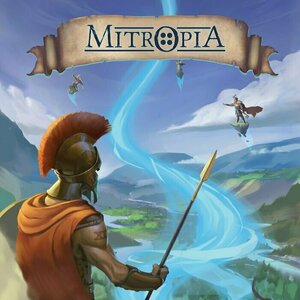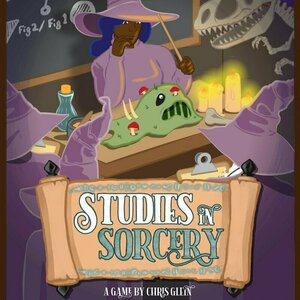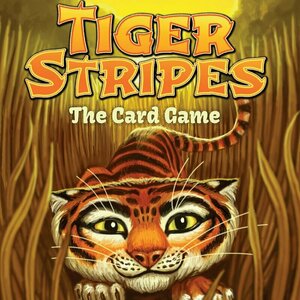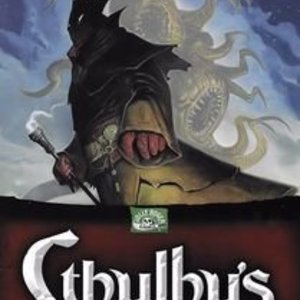Search
Search results
Purple Phoenix Games (2266 KP) rated Dragons Wild in Tabletop Games
Feb 1, 2021
Have you ever had Gamer Deja Vu? Like you know you’ve played this game before but don’t remember, or the mechanics just feel so familiar? I have it seldomly, but I still feel it at times. What I enjoy about certain games is how quick they are teach, have familiar mechanics, but also have their own twists to truly make it unique. Have I found that here with Dragons Wild?
Dragons Wild is a trick-taking game very similar to the old standard, Rummy. So like its predecessor players are trying to rid their hands of cards in order to signal the end of the game. Where this version separates is in the little details that are absent from Rummy.
DISCLAIMER: We were provided a prototype copy of this game for the purposes of this review. These are preview copy components, and I do not know for sure if the final components will be any different from these shown. Also, it is not my intention to detail every rule in the game, as there are just too many. You are invited to download the rulebook, back the game through the Kickstarter campaign launching February 2, 2021, or through any retailers stocking it after fulfillment. -T
To setup choose a dealer and a scorer (different players). The dealer will shuffle the entire deck of cards, save for the scoring cards, and deal each player seven cards. The draw deck is placed in the middle of the table and the dealer flips the top card to create the discard pile. The scorer finds the reference score card and places the dragon token on or near the “Round 1, Score 8 per card” text. The game may now begin!
Generally, the game is played much like Rummy where players are attempting to lay down melds of cards containing either runs (1, 2, 3, 4, etc) or sets (2, 2, 2 of different suits). Once a player has a meld in front of themselves they may play their cards onto other players’ melds. Players must discard a card at the end of each turn, and play continues in this manner until a player runs out of cards.
Dragons Wild, however, adds a few twists to pump up the play of traditional Rummy. Each player will need to keep track of their point totals as they will change with each play of a card. Should a player lay a meld on Round 1 they score eight VP for each card laid. In Round 2 cards are worth seven points each. Round 3 each card is worth six points and so on until Round 8 (or more) where each card is worth just one point.
Another way in which Dragons Wild differs from its older cousin is in the buying of cards (as far as I remember – I’m no Rummy expert). On their turn the active player must draw a card from either the top of the draw deck or the top of the discard pile. However, before the active player chooses, should another player wish to buy the face-up discard card the active player decides to allow or disallow the buy. With a successful buy the buying player takes the discarded card as well as the top card of the draw deck as payment. A player may buy as many as three cards in this fashion for each new active player.
Also, Dragons Wild offers a slight rule change for Wild cards in melds. Every time I have played Rummy in my lifetime any Wild is up for grabs as long as it can be replaced with a legal card from any player’s hand on their turn. This is not the case in Dragons Wild, as only Wild cards that hang on the end of a RUN of cards may be taken, replaced, or moved to the other end by the active player.
The game ends once one player is able to rid their entire hand of cards and still have one card to discard at the end of their turn. Players then total their scores from all cards played, scoring points differently depending on the Round in which they were laid. Other players still possessing cards then subtract the NUMBER of cards still held from their entire score, not their values. The player with the most points after this scoring phase is the winner!
Components. Again, this is a prototype copy of the game, and I am completely unsure which, if any, components will be upgraded as a result of a successful Kickstarter campaign. That said, I can comment on a couple things. First, the art style. While it is not my cup of tea (dragons have tea parties, right?) I can see where others may quite enjoy its fancifulness and whimsy. The game is very colorful, and I do appreciate that quite a lot. The cards are laid out well, and each suit is a different species of fantastic beast (though I rarely knew which was which – I just paid attention to the background color in the corners of the cards mostly). So I have no real problems with the components at all, I just wish for different art. The designer was nice enough to send along a print of a purple phoenix with this copy, which is super rad of her, and it looks great. Maybe she will add them into the final version…
Gameplay is familiar, like I stated earlier, because I would think most people have played Rummy or a variation of it at some point. In fact, my family was big into Rummikub growing up, and my grandparents were big into Rummy proper. So this was somewhat nostalgic for me while also bringing a few house rules and art that is different from a boring deck of normal playing cards.
The rules are not at all difficult, so learning, teaching, and playing have not seemed to be an issue at all here. If players have all played a version of Rummy before then this one will fly pretty quickly. It is a simple, fast, and slightly unique version of Rummy that would be nice to keep around if you need to wait on another player to arrive and they are 10 minutes away, or as a palette cleanser between games. Definitely a filler game, and not at all a bad one!
If you are looking for a differently-themed Rummy replacement with a twist, I recommend checking out Dragons Wild. It’s cute, quick, and has dragons, for Pete’s sake. Consider backing the Kickstarter campaign or asking your LFGS to stock it upon release.
Dragons Wild is a trick-taking game very similar to the old standard, Rummy. So like its predecessor players are trying to rid their hands of cards in order to signal the end of the game. Where this version separates is in the little details that are absent from Rummy.
DISCLAIMER: We were provided a prototype copy of this game for the purposes of this review. These are preview copy components, and I do not know for sure if the final components will be any different from these shown. Also, it is not my intention to detail every rule in the game, as there are just too many. You are invited to download the rulebook, back the game through the Kickstarter campaign launching February 2, 2021, or through any retailers stocking it after fulfillment. -T
To setup choose a dealer and a scorer (different players). The dealer will shuffle the entire deck of cards, save for the scoring cards, and deal each player seven cards. The draw deck is placed in the middle of the table and the dealer flips the top card to create the discard pile. The scorer finds the reference score card and places the dragon token on or near the “Round 1, Score 8 per card” text. The game may now begin!
Generally, the game is played much like Rummy where players are attempting to lay down melds of cards containing either runs (1, 2, 3, 4, etc) or sets (2, 2, 2 of different suits). Once a player has a meld in front of themselves they may play their cards onto other players’ melds. Players must discard a card at the end of each turn, and play continues in this manner until a player runs out of cards.
Dragons Wild, however, adds a few twists to pump up the play of traditional Rummy. Each player will need to keep track of their point totals as they will change with each play of a card. Should a player lay a meld on Round 1 they score eight VP for each card laid. In Round 2 cards are worth seven points each. Round 3 each card is worth six points and so on until Round 8 (or more) where each card is worth just one point.
Another way in which Dragons Wild differs from its older cousin is in the buying of cards (as far as I remember – I’m no Rummy expert). On their turn the active player must draw a card from either the top of the draw deck or the top of the discard pile. However, before the active player chooses, should another player wish to buy the face-up discard card the active player decides to allow or disallow the buy. With a successful buy the buying player takes the discarded card as well as the top card of the draw deck as payment. A player may buy as many as three cards in this fashion for each new active player.
Also, Dragons Wild offers a slight rule change for Wild cards in melds. Every time I have played Rummy in my lifetime any Wild is up for grabs as long as it can be replaced with a legal card from any player’s hand on their turn. This is not the case in Dragons Wild, as only Wild cards that hang on the end of a RUN of cards may be taken, replaced, or moved to the other end by the active player.
The game ends once one player is able to rid their entire hand of cards and still have one card to discard at the end of their turn. Players then total their scores from all cards played, scoring points differently depending on the Round in which they were laid. Other players still possessing cards then subtract the NUMBER of cards still held from their entire score, not their values. The player with the most points after this scoring phase is the winner!
Components. Again, this is a prototype copy of the game, and I am completely unsure which, if any, components will be upgraded as a result of a successful Kickstarter campaign. That said, I can comment on a couple things. First, the art style. While it is not my cup of tea (dragons have tea parties, right?) I can see where others may quite enjoy its fancifulness and whimsy. The game is very colorful, and I do appreciate that quite a lot. The cards are laid out well, and each suit is a different species of fantastic beast (though I rarely knew which was which – I just paid attention to the background color in the corners of the cards mostly). So I have no real problems with the components at all, I just wish for different art. The designer was nice enough to send along a print of a purple phoenix with this copy, which is super rad of her, and it looks great. Maybe she will add them into the final version…
Gameplay is familiar, like I stated earlier, because I would think most people have played Rummy or a variation of it at some point. In fact, my family was big into Rummikub growing up, and my grandparents were big into Rummy proper. So this was somewhat nostalgic for me while also bringing a few house rules and art that is different from a boring deck of normal playing cards.
The rules are not at all difficult, so learning, teaching, and playing have not seemed to be an issue at all here. If players have all played a version of Rummy before then this one will fly pretty quickly. It is a simple, fast, and slightly unique version of Rummy that would be nice to keep around if you need to wait on another player to arrive and they are 10 minutes away, or as a palette cleanser between games. Definitely a filler game, and not at all a bad one!
If you are looking for a differently-themed Rummy replacement with a twist, I recommend checking out Dragons Wild. It’s cute, quick, and has dragons, for Pete’s sake. Consider backing the Kickstarter campaign or asking your LFGS to stock it upon release.
The Marinated Meeple (1853 KP) rated The Bottle Imp in Tabletop Games
Sep 17, 2018
So much deeper strategy that it appears (1 more)
every round is tense
Exceptional 3 player trick taking game.
This is the kind of game every person should own. It's simple, and easy to play, and yet is really tense and you are making fun decisions. Someone at the table is getting screwed, will it be you. You push your luck for a few more points, or play it safe. The simple mechanism of making the "trump" the highest low card. and then that becomes the new bar you have to play below to activate the trump. But it also gives you the bottle, and if you end up with the bottle at the end of the round you get none of the points you collected and the card people put in the middle at the start are your negative points. You can also "Control your destiny" by passing three cards from your hand, one to the left, one to the right and one you bury in the middle" At first this seems like an easy choice, but then you see the are layers to that decision. This is the kind of game with lots of ah-ha moments and I would say the first play reveals some, the 2nd play reveals more and by the time you have played 3 or 4 hands, you probably love the game as much as I do now. It's worth the $20, this will be in my collection a long time. I'm very strongly considering creating a 6 player version of this game, we have lots of game nights with 6 and almost none with 3. I'd love to get this game out more often.
Entertainment Editor (1988 KP) rated The Castles of Burgundy in Tabletop Games
Mar 7, 2018
The Castles of Burgundy Review
I was somewhat disappointed with the components of this game. While the price point isn’t very high, the game still feels a little cheaply made. For most people, the main complaint with The Castles of Burgundy is the player mats. They seem to be made of a light card stock, rather than standard cardboard. They feel quite flimsily and seem like they could tear or bend fairly easily. The artwork for this game is also somewhat bland. The colors have a little bit of low-saturation feel to them and the artwork is not particularly impressive. I would like to note that you do get a lot of tokens with this game. There are about 164 hex tokens that will be used in the game, a handful of dice and some other miscellaneous tokens. This does make setup a bit of a chore, as there is a lot to keep organized. I’d recommend one of those plano storage boxes if you are going to play this game a lot.
Original Rating: 2.5
Reviewer: Tony Mastrangeli
Read the full review here: https://www.boardgamequest.com/the-castles-of-burgundy-review/
Original Rating: 2.5
Reviewer: Tony Mastrangeli
Read the full review here: https://www.boardgamequest.com/the-castles-of-burgundy-review/
Purple Phoenix Games (2266 KP) rated Studies in Sorcery in Tabletop Games
Oct 6, 2020
We’re all nerds here, right? What was the best class the gang took in the Harry Potter series? Defense Against the Dark Arts of course! Learning spells to protect ones’ self (oneself? themselves??) from an onslaught of dark spells looked so fun in the movies. *DISCLAIMER: I have never read a Harry Potter book. I made it one chapter and couldn’t do it, but I have seen the movies several times.* In any case, what if you could learn the other side of these spells? The offensive ones? Well that would be cool right? What if you could get a full master’s degree in Dark Arts? Welcome to Studies in Sorcery.
Studies in Sorcery is a competitive card game that uses elements from other well-loved games and puts them with a wonderful theme and some very interesting card synergies. The game takes place over four school semesters (rounds) and each semester lasts four weeks (turns). Can you students complete your thesis using the research grants you are given, or will you fall flat to repeat the program again?
DISCLAIMER: We were provided a prototype copy of this game for the purposes of this preview. These are preview copy components, and the final components may be different from these shown. Also, it is not my intention to detail every rule in the game, but to give our readers an idea of how the game plays. You are invited to back the game on Kickstarter launching October 6, 2020, order from your FLGS, or purchase through any retailers stocking it after it is fulfilled. -T
To setup, separate each deck of cards into like piles (Levels 100, 200, and 300 of the projects, graveyard cards, candles, vials) and shuffle them. Lay out the moon phase cards and semester tracker, placing the tracker tokens (skull erasers in the prototype) on the start of the cards to begin play. Set out the candles and vials in their own piles, as well as the point modifier tokens. Deal project cards according to the semester tracker in a 3×2 pattern under the moon phase and semester tracker cards like is shown in the photo below. Initially the graveyard pile will have three stacks of two cards each face-down next to the draw pile. Each player receives a research grant card, two thesis cards to choose one from, and two 100-level project cards from which the player will choose one. Give the first-player token (in this prototype it’s a cute LEGO skeleton) to the player who last attended school, and the game may begin!
Each player will be resolving actions, committing materials to their projects, and using completed project abilities each moon phase (turn). The actions one may take are: Dig, Buy, Cram, and Project Action. When a player uses the Dig action, they are searching for materials. A player can look at the items in the first pile of graveyard cards and take all the contents. If they do not like them, draw a card from the draw deck and place it on the first pile. Continue this for the next pile, and if unsatisfied the player may draw the top card from the draw pile OR either a candle or vial from the supply of stock cards.
Buy actions allow a player to use any unwanted materials or research grant monies to purchase additional candles, vials, or project cards from the middle of the table. To Cram, players may commit up to two materials from their hand to a project by placing the materials under the project cards. Project Actions allow players to use actions printed on any of their completed project cards. These can be very powerful.
Once each player has taken one of these actions, move the tracker token on the moon phase card to the next icon – Commit. To commit materials to projects, simply place the cards under the selected project (exactly like players do with the Cram action). Once all players have completed their commits, they may complete any projects that have sufficient materials by discarding the used materials and flipping the project card to its opposite side earning the printed points at the end of the game.
Play continues in this fashion for four turns each semester and the game lasts four semesters. Therefore the game will last 16 turns total. Whomever earns the most points for combinations of completed thesis cards, completed projects, bonus point modifier tokens, and one point for each $8 worth of materials in hand will be named Valedictorian of their class and winner of Studies in Sorcery!
Components. Again, this is a prototype copy of the game, and I know some things will be different in the final version. However, what we were provided is a bunch of cards that have great art, are good quality, and are very easy to read and understand. The cute first player token will more than likely become a different component in the end, and the tracker tokens probably will be changed as well, but these are great bits to include in a game like this. The only negative I have about components is that I wish there was MORE color. Most of the cards are brown-heavy, and it’s completely fine, but I would love to have splashes of weird colors here and there. Overall, I am very pleased with the components in this game. Weird Giraffe Games always has great components in their prototypes AND final games.
It is probably no surprise that I love this game. The theme is wonderful, the wonky art is great, and it’s more thinky than one might imagine. The game play can be somewhat quick, or players can take excruciating amounts of time to think through their turns and chain together impressive actions. One thing remains constant – 16 turns to complete your thesis cards can be a huge undertaking. My first time playing I chose a thesis card worth 7 points (even though the rulebook advised me not to include those for the first play). I wasn’t even really that close to completing the thesis, but I may have with another two or three turns. But then again, that card is worth 7 points for a reason – it’s SUPPOSED to be difficult. My suggestion: take the rulebook’s advice and remove those thesis cards for the first play. Don’t try to be a hero.
Ahhhhhhh! I want to play it again right now just so I can attempt that thesis card again. But there are other thesis cards in the game. And other strategies to apply. And really, when you can’t wait to play a game, that’s a sign of a fantastic game for that specific gamer. Will this be a gem for everyone? I don’t know. It certainly works for me and my circle of gamers.
If you are a fan of the Harry Potter series (even though this is NOT a Harry Potter game) and need a thinky card game with that sort of fantasy classroom theme, or if your collection is begging for something new and quirky, or if you just love Weird Giraffe Games’ catalog and need every game they offer (I wouldn’t blame you), then you need to give Studies in Sorcery a look. Please consider backing it on Kickstarter launching October 6, 2020. I know my collection just got a lot cooler with this one.
Studies in Sorcery is a competitive card game that uses elements from other well-loved games and puts them with a wonderful theme and some very interesting card synergies. The game takes place over four school semesters (rounds) and each semester lasts four weeks (turns). Can you students complete your thesis using the research grants you are given, or will you fall flat to repeat the program again?
DISCLAIMER: We were provided a prototype copy of this game for the purposes of this preview. These are preview copy components, and the final components may be different from these shown. Also, it is not my intention to detail every rule in the game, but to give our readers an idea of how the game plays. You are invited to back the game on Kickstarter launching October 6, 2020, order from your FLGS, or purchase through any retailers stocking it after it is fulfilled. -T
To setup, separate each deck of cards into like piles (Levels 100, 200, and 300 of the projects, graveyard cards, candles, vials) and shuffle them. Lay out the moon phase cards and semester tracker, placing the tracker tokens (skull erasers in the prototype) on the start of the cards to begin play. Set out the candles and vials in their own piles, as well as the point modifier tokens. Deal project cards according to the semester tracker in a 3×2 pattern under the moon phase and semester tracker cards like is shown in the photo below. Initially the graveyard pile will have three stacks of two cards each face-down next to the draw pile. Each player receives a research grant card, two thesis cards to choose one from, and two 100-level project cards from which the player will choose one. Give the first-player token (in this prototype it’s a cute LEGO skeleton) to the player who last attended school, and the game may begin!
Each player will be resolving actions, committing materials to their projects, and using completed project abilities each moon phase (turn). The actions one may take are: Dig, Buy, Cram, and Project Action. When a player uses the Dig action, they are searching for materials. A player can look at the items in the first pile of graveyard cards and take all the contents. If they do not like them, draw a card from the draw deck and place it on the first pile. Continue this for the next pile, and if unsatisfied the player may draw the top card from the draw pile OR either a candle or vial from the supply of stock cards.
Buy actions allow a player to use any unwanted materials or research grant monies to purchase additional candles, vials, or project cards from the middle of the table. To Cram, players may commit up to two materials from their hand to a project by placing the materials under the project cards. Project Actions allow players to use actions printed on any of their completed project cards. These can be very powerful.
Once each player has taken one of these actions, move the tracker token on the moon phase card to the next icon – Commit. To commit materials to projects, simply place the cards under the selected project (exactly like players do with the Cram action). Once all players have completed their commits, they may complete any projects that have sufficient materials by discarding the used materials and flipping the project card to its opposite side earning the printed points at the end of the game.
Play continues in this fashion for four turns each semester and the game lasts four semesters. Therefore the game will last 16 turns total. Whomever earns the most points for combinations of completed thesis cards, completed projects, bonus point modifier tokens, and one point for each $8 worth of materials in hand will be named Valedictorian of their class and winner of Studies in Sorcery!
Components. Again, this is a prototype copy of the game, and I know some things will be different in the final version. However, what we were provided is a bunch of cards that have great art, are good quality, and are very easy to read and understand. The cute first player token will more than likely become a different component in the end, and the tracker tokens probably will be changed as well, but these are great bits to include in a game like this. The only negative I have about components is that I wish there was MORE color. Most of the cards are brown-heavy, and it’s completely fine, but I would love to have splashes of weird colors here and there. Overall, I am very pleased with the components in this game. Weird Giraffe Games always has great components in their prototypes AND final games.
It is probably no surprise that I love this game. The theme is wonderful, the wonky art is great, and it’s more thinky than one might imagine. The game play can be somewhat quick, or players can take excruciating amounts of time to think through their turns and chain together impressive actions. One thing remains constant – 16 turns to complete your thesis cards can be a huge undertaking. My first time playing I chose a thesis card worth 7 points (even though the rulebook advised me not to include those for the first play). I wasn’t even really that close to completing the thesis, but I may have with another two or three turns. But then again, that card is worth 7 points for a reason – it’s SUPPOSED to be difficult. My suggestion: take the rulebook’s advice and remove those thesis cards for the first play. Don’t try to be a hero.
Ahhhhhhh! I want to play it again right now just so I can attempt that thesis card again. But there are other thesis cards in the game. And other strategies to apply. And really, when you can’t wait to play a game, that’s a sign of a fantastic game for that specific gamer. Will this be a gem for everyone? I don’t know. It certainly works for me and my circle of gamers.
If you are a fan of the Harry Potter series (even though this is NOT a Harry Potter game) and need a thinky card game with that sort of fantasy classroom theme, or if your collection is begging for something new and quirky, or if you just love Weird Giraffe Games’ catalog and need every game they offer (I wouldn’t blame you), then you need to give Studies in Sorcery a look. Please consider backing it on Kickstarter launching October 6, 2020. I know my collection just got a lot cooler with this one.
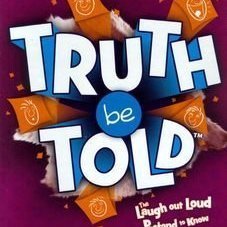
Truth Be Told
Tabletop Game
Truth Be Told is a revealing laugh-out-loud, pretend to know your friends party game! Each round one...

Calciatori Adrenalyn XL™ 2017-18
Sports and Games
App
Enjoy the new official app Adrenalyn XL™ Calciatori 2017-18, the only official trading card game...

Tavarua
Tabletop Game
Tavarua is a 1-6 player competitive surfing board game. In Tavarua you are a surfer in a surf...
Boardgames SurfingGames 6playerGames
Purple Phoenix Games (2266 KP) rated Tiger Stripes in Tabletop Games
Nov 25, 2021
So it was one of those days when I was checking my email and noticed something odd. I had a random tracking number sitting in my inbox for a game arriving soon. I didn’t recall requesting this game, so why was I having one shipped? A mystery still to this day. However, I recognized the designer’s last name, but could she be related to the designer in mind that I particularly enjoy? And would this game be any good? I was cautiously hopeful.
Tiger Stripes is a set collection, hand management, drafting game for two to four players. In it, players are young tiger cubs just earning their stripes (a fact I did not know prior to playing: that tiger cubs aren’t born with stripes). Each cub will earn their stripes by drafting the best available cards and utilizing them to the fullest in order to collect sets of prey.
Oh fact check: tigers are born with stripes already, so this game is not based fully on facts.
DISCLAIMER: We were provided a copy of this game for the purposes of this review. This is a retail copy of the game (I think), so what you see in these photos is probably what would be received in your box. I do not intend to cover every single rule included in the rulebook, but will describe the overall game flow and major rule set so that our readers may get a sense of how the game plays. For more in depth rules, you may purchase a copy online or from your FLGS. -T
To setup, each player will choose their tiger avatar cards and also receive seven Stripe tokens. The card deck is shuffled, and each player is dealt two cards for the starting hand. The remainder of the deck is placed on the table as a draw deck, but five cards are dealt to the table as an offer row. The youngest player goes first, and the stripes are ready to be earned, like Boy Scout badges… but for ferocious tiger cubs.
Turns are taken in three steps. The player must make a choice of one action for the first step of their turn: Draw a card, Take a tiger card, or Capture Prey. A player may choose to blindly draw a card from the top of the deck and add it to their hand as their action. Alternately, the player may instead choose to take a tiger card from the offer row and add it to their hand. Both of these are self-explanatory.
The third action that can be taken is to Capture Prey. A tiger may capture prey from the offer row by discarding cards from their hand with matching symbols to their target cards they wish to capture. Each card in Tiger Stripes has one or more symbols printed in the upper left hand corner. By discarding cards from hand to the discard pile, a player may use all the symbols provided by these cards to match with cards’ symbols from the offer row. For example, a player may discard two tiger cards and a snake card, noting the symbols now provided. By using the purchasing power of these symbols, the player may then draft cards from the offer row by paying their cost in symbols. It is entirely possible for a player to be able to draft cards from hand in order to purchase all available cards in the offer row to be added to their hand. An explanation of the significance of this is coming.
The second step of a turn is mandatory only if the prerequisites are met: every set of three like cards in hand are discarded in return for Stripe Tokens. So, for every set of three matching monkey, snake, deer, and boar, the player will receive one, two, three, or four Stripe Tokens to be added to their avatar card, respectively, with any tiger cards discarded to be treated as wild cards to complete a set. Therefore, a player may wish to purchase all cards from the offer row in an attempt to score multiple sets during this second step to earn as many stripes as possible.
Finally, the third step of the turn is to Replenish the Jungle (the offer row). For any cards drafted in the turn, the player will replace with cards from the draw deck to setup the next player’s turn.
Play continues in this fashion of grabbing cards, discarding cards, and scoring sets for stripes until one player has earned their seventh stripe and won the game!
Components. This game is a deck of cards and a bunch of Stripe Tokens. The cards are all nice quality, with linen finish, but are a bit on the thinner side as far as flimsiness is concerned. I think if players are all somewhat careful this will not pose problems. If so, consider sleeving your copy. The Stripe Tokens are oblong octagons with stripey art. Speaking of the art, throughout the game the art is very cute and cuddly… except for the boar. He is crotchety. I do enjoy finding the stalking tiger somewhat hidden on each card’s art. A great nod to the noble tiger’s hunting ability.
Now, as I was typing the rules breakdown I felt like I was typing quite a lot for as light as the game actually is. In fact, though it says on the box that it is intended for ages 7+ I just couldn’t leave out my little 5-year-old gamer son. He grasped the rules really well, and though he hasn’t developed the best strategy-focused brain skills yet, he is still able to play and enjoy Tiger Stripes. In actuality, he and I had a blast playing through this several times. Yes, it is a resource optimization card drafting game, but to him, it was more like procuring a veritable zoo of cute animals that then offered his tiger the stripes needed to win. And win he did. Several times. This certainly isn’t a game of high strategy and multiple-minute turns, but rather a quick and easy card game with a great little theme.
Is the designer, Isabel duBarry, a relative of the great Philip duBarry? Perhaps. And that is a great thing, because one of our favorite games across the board is Revolution! Perchance game design just runs in the family. I am not sure, so maybe someone can chime in on this here.
When my son adds a game to his rotation, that is a sign of a great little game for us. He has added Tiger Stripes to this rotation and we will be playing the mess out of it here over the next several weeks/months. While this is by no means a gamer’s game, it is absolutely perfect for a game day with kids. My child loves it, and I quite enjoy playing as a tiny tiger out on the prowl for their stripes. If you have littles at home, parents who haven’t quite converted fully into game partners, or newbies you are inviting into the hobby, Tiger Stripes is a good little game to get the party started. It’s quick, easy, features great art and theme, and introduces simple mechanics to hook people on gaming. Go grab a copy and just keep it in your back pocket for those times you need something like this for that one special group in front of you.
Tiger Stripes is a set collection, hand management, drafting game for two to four players. In it, players are young tiger cubs just earning their stripes (a fact I did not know prior to playing: that tiger cubs aren’t born with stripes). Each cub will earn their stripes by drafting the best available cards and utilizing them to the fullest in order to collect sets of prey.
Oh fact check: tigers are born with stripes already, so this game is not based fully on facts.
DISCLAIMER: We were provided a copy of this game for the purposes of this review. This is a retail copy of the game (I think), so what you see in these photos is probably what would be received in your box. I do not intend to cover every single rule included in the rulebook, but will describe the overall game flow and major rule set so that our readers may get a sense of how the game plays. For more in depth rules, you may purchase a copy online or from your FLGS. -T
To setup, each player will choose their tiger avatar cards and also receive seven Stripe tokens. The card deck is shuffled, and each player is dealt two cards for the starting hand. The remainder of the deck is placed on the table as a draw deck, but five cards are dealt to the table as an offer row. The youngest player goes first, and the stripes are ready to be earned, like Boy Scout badges… but for ferocious tiger cubs.
Turns are taken in three steps. The player must make a choice of one action for the first step of their turn: Draw a card, Take a tiger card, or Capture Prey. A player may choose to blindly draw a card from the top of the deck and add it to their hand as their action. Alternately, the player may instead choose to take a tiger card from the offer row and add it to their hand. Both of these are self-explanatory.
The third action that can be taken is to Capture Prey. A tiger may capture prey from the offer row by discarding cards from their hand with matching symbols to their target cards they wish to capture. Each card in Tiger Stripes has one or more symbols printed in the upper left hand corner. By discarding cards from hand to the discard pile, a player may use all the symbols provided by these cards to match with cards’ symbols from the offer row. For example, a player may discard two tiger cards and a snake card, noting the symbols now provided. By using the purchasing power of these symbols, the player may then draft cards from the offer row by paying their cost in symbols. It is entirely possible for a player to be able to draft cards from hand in order to purchase all available cards in the offer row to be added to their hand. An explanation of the significance of this is coming.
The second step of a turn is mandatory only if the prerequisites are met: every set of three like cards in hand are discarded in return for Stripe Tokens. So, for every set of three matching monkey, snake, deer, and boar, the player will receive one, two, three, or four Stripe Tokens to be added to their avatar card, respectively, with any tiger cards discarded to be treated as wild cards to complete a set. Therefore, a player may wish to purchase all cards from the offer row in an attempt to score multiple sets during this second step to earn as many stripes as possible.
Finally, the third step of the turn is to Replenish the Jungle (the offer row). For any cards drafted in the turn, the player will replace with cards from the draw deck to setup the next player’s turn.
Play continues in this fashion of grabbing cards, discarding cards, and scoring sets for stripes until one player has earned their seventh stripe and won the game!
Components. This game is a deck of cards and a bunch of Stripe Tokens. The cards are all nice quality, with linen finish, but are a bit on the thinner side as far as flimsiness is concerned. I think if players are all somewhat careful this will not pose problems. If so, consider sleeving your copy. The Stripe Tokens are oblong octagons with stripey art. Speaking of the art, throughout the game the art is very cute and cuddly… except for the boar. He is crotchety. I do enjoy finding the stalking tiger somewhat hidden on each card’s art. A great nod to the noble tiger’s hunting ability.
Now, as I was typing the rules breakdown I felt like I was typing quite a lot for as light as the game actually is. In fact, though it says on the box that it is intended for ages 7+ I just couldn’t leave out my little 5-year-old gamer son. He grasped the rules really well, and though he hasn’t developed the best strategy-focused brain skills yet, he is still able to play and enjoy Tiger Stripes. In actuality, he and I had a blast playing through this several times. Yes, it is a resource optimization card drafting game, but to him, it was more like procuring a veritable zoo of cute animals that then offered his tiger the stripes needed to win. And win he did. Several times. This certainly isn’t a game of high strategy and multiple-minute turns, but rather a quick and easy card game with a great little theme.
Is the designer, Isabel duBarry, a relative of the great Philip duBarry? Perhaps. And that is a great thing, because one of our favorite games across the board is Revolution! Perchance game design just runs in the family. I am not sure, so maybe someone can chime in on this here.
When my son adds a game to his rotation, that is a sign of a great little game for us. He has added Tiger Stripes to this rotation and we will be playing the mess out of it here over the next several weeks/months. While this is by no means a gamer’s game, it is absolutely perfect for a game day with kids. My child loves it, and I quite enjoy playing as a tiny tiger out on the prowl for their stripes. If you have littles at home, parents who haven’t quite converted fully into game partners, or newbies you are inviting into the hobby, Tiger Stripes is a good little game to get the party started. It’s quick, easy, features great art and theme, and introduces simple mechanics to hook people on gaming. Go grab a copy and just keep it in your back pocket for those times you need something like this for that one special group in front of you.
Purple Phoenix Games (2266 KP) rated Cthulhu's Vault in Tabletop Games
Nov 9, 2021
As a kid, one thing my siblings and I used to do was play a storytelling game in which we created a (usually) hilarious story, one word at a time. You know the kind. One person starts the sentence with a single word, the next person in line adds a word, and so on, resulting in some ridiculous storyline that ultimately makes little overall sense. So when I heard about Cthulhu’s Vault, a game with a storytelling aspect, I was keen to try it! Even though the subject matter is obviously a little darker, does the overall game live up to my childhood memories of creating stories?
Cthulhu’s Vault is a card game in which players are working together to craft an occult story, which will ultimately lead to a final battle with one of the Ancient Ones. To setup the game, each player receives an Ancient One card (kept face-down), 7 Story cards, and 2 Power tokens (one Investigator and one Cultist). Power tokens are kept face-down and are secret from other players. The remaining Power tokens are placed into two pools – either face-up or face-down as described in the rules – and a starting Story card is drawn and placed in the middle of the play area. The Power Guide card is placed off to the side, visible to players, and shows the amount of Cultist Power necessary to awaken your Ancient One during play. Select a starting player, and the game is ready to begin!
The game is broken down into two phases: the Mystery Stage and the Epic Battle Stage. The Mystery Stage begins the game, and consists of the storytelling element. On your turn, you will select a Story card from your hand and play it to the table. Here’s the catch – all players are trying to create a cohesive storyline, so you are encouraged to narrate and chain together a single story with the addition of each new Story card. After you play your Story card and tell your brief addition to the tale, you will collect a number of Power tokens as described on your played Story card, receiving Bonus tokens if applicable. The Mystery Stage continues in this fashion until a player has acquired the requisite number of Cultist Power tokens necessary to awaken their Ancient One. At the start of that turn, the player will reveal their Ancient One, and the Mystery Stage ends immediately.
Moving on to the Epic Battle Stage, there is a small bit of setup. All remaining Story cards are discarded, and Investigator cards are displayed. The player who awoke their Ancient One collects a number of Power tokens equal to the health of their creature, gathers/shuffles the Ancient One Combat Deck, and draws a hand of 3 Combat cards. All remaining players will select an Investigator to play, in order, depending on the total number of Investigator Power tokens gained during the Mystery Stage. Players will discard down to/collect a number of Power tokens to match the health of their Investigator, shuffle the Investigator Combat Deck, and draw a number of cards as dictated by their Investigator card. A Battle Order deck is created and shuffled, and will dictate the order of actions during each Epic Battle turn. The Epic Battle Stage is now ready to begin.
During the Epic Battle, a card from the Battle Order deck is revealed – either an Investigator or the Ancient One. The corresponding player will then act, playing a card from their hand, performing the action (usually Wounding the opponent), and then drawing back up to their hand limit. Play continues in this way until either the Ancient One is defeated (all Health depleted), or all the Investigators are devoured by the Ancient One. If the Ancient One is defeated, the Investigators have won! And if the Ancient One has eliminated all the Investigators, then that player wins. Either way, whomever wins is encouraged to come up with a brief epilogue to bring the overall story to an end.
So all in all, how does Cthulhu’s Vault fare? Honestly, not too great. Let’s start with the rulebook. It has some areas of serious ambiguity and confusion, which made this game kind of tough and frustrating for me to learn at first. Now that I think I’ve got it figured out, it’s ok, but that first read-through was rough. Now getting down to the actual gameplay. I can appreciate what the game is trying to do – have players create a story and then engage in their narrated battle – but the two phases of the game seem very disjointed to me. It kind of feels like you are playing 2 separate games in one. You get to have some creative fun making up a spooky story, which is then swiftly forgotten as combat ensues. There is little to no connection between the two phases, and that lack of connection makes the storytelling phase seem obsolete.
Another thing to consider when checking this game out is the group of people with whom you will play. To really get a fun, immersive story going, all players need to be willing to embrace the storytelling aspect, and get into the narrative. Requiring that type of creativity on the spot can make some players uncomfortable, and they just might not enjoy that element of the game. Let’s touch on components for a minute. I think that for the most part, the production quality is fine! The Story, Investigator, and Ancient One cards are all oversized, sturdy, and feature some neat spooky art and flavor text. The Combat cards are normal sized, and for the most part clear in their text/actions. The Power tokens are small wooden discs, and are fun to play with. The version I have is in a tin, not a cardboard box, and the tin is nice and sturdy too. Overall, good quality game.
In theory, I think Cthulhu’s Vault is a neat game. The actual execution of the gameplay doesn’t quite hit the mark for me though. The lack of connection between the two phases of the game really detracts from the overall immersion. If there were a stronger connection, perhaps I would like it more, but as it stands, it just feels like 2 separate games in one box. If you’re into storytelling games, I would consider Cthulhu’s Vault because it does provide a neat opportunity for players to craft a unified story. But the shift to the combat phase feels sudden and unrelated. Purple Phoenix Games gives this one a fiendish 5 / 12.
Cthulhu’s Vault is a card game in which players are working together to craft an occult story, which will ultimately lead to a final battle with one of the Ancient Ones. To setup the game, each player receives an Ancient One card (kept face-down), 7 Story cards, and 2 Power tokens (one Investigator and one Cultist). Power tokens are kept face-down and are secret from other players. The remaining Power tokens are placed into two pools – either face-up or face-down as described in the rules – and a starting Story card is drawn and placed in the middle of the play area. The Power Guide card is placed off to the side, visible to players, and shows the amount of Cultist Power necessary to awaken your Ancient One during play. Select a starting player, and the game is ready to begin!
The game is broken down into two phases: the Mystery Stage and the Epic Battle Stage. The Mystery Stage begins the game, and consists of the storytelling element. On your turn, you will select a Story card from your hand and play it to the table. Here’s the catch – all players are trying to create a cohesive storyline, so you are encouraged to narrate and chain together a single story with the addition of each new Story card. After you play your Story card and tell your brief addition to the tale, you will collect a number of Power tokens as described on your played Story card, receiving Bonus tokens if applicable. The Mystery Stage continues in this fashion until a player has acquired the requisite number of Cultist Power tokens necessary to awaken their Ancient One. At the start of that turn, the player will reveal their Ancient One, and the Mystery Stage ends immediately.
Moving on to the Epic Battle Stage, there is a small bit of setup. All remaining Story cards are discarded, and Investigator cards are displayed. The player who awoke their Ancient One collects a number of Power tokens equal to the health of their creature, gathers/shuffles the Ancient One Combat Deck, and draws a hand of 3 Combat cards. All remaining players will select an Investigator to play, in order, depending on the total number of Investigator Power tokens gained during the Mystery Stage. Players will discard down to/collect a number of Power tokens to match the health of their Investigator, shuffle the Investigator Combat Deck, and draw a number of cards as dictated by their Investigator card. A Battle Order deck is created and shuffled, and will dictate the order of actions during each Epic Battle turn. The Epic Battle Stage is now ready to begin.
During the Epic Battle, a card from the Battle Order deck is revealed – either an Investigator or the Ancient One. The corresponding player will then act, playing a card from their hand, performing the action (usually Wounding the opponent), and then drawing back up to their hand limit. Play continues in this way until either the Ancient One is defeated (all Health depleted), or all the Investigators are devoured by the Ancient One. If the Ancient One is defeated, the Investigators have won! And if the Ancient One has eliminated all the Investigators, then that player wins. Either way, whomever wins is encouraged to come up with a brief epilogue to bring the overall story to an end.
So all in all, how does Cthulhu’s Vault fare? Honestly, not too great. Let’s start with the rulebook. It has some areas of serious ambiguity and confusion, which made this game kind of tough and frustrating for me to learn at first. Now that I think I’ve got it figured out, it’s ok, but that first read-through was rough. Now getting down to the actual gameplay. I can appreciate what the game is trying to do – have players create a story and then engage in their narrated battle – but the two phases of the game seem very disjointed to me. It kind of feels like you are playing 2 separate games in one. You get to have some creative fun making up a spooky story, which is then swiftly forgotten as combat ensues. There is little to no connection between the two phases, and that lack of connection makes the storytelling phase seem obsolete.
Another thing to consider when checking this game out is the group of people with whom you will play. To really get a fun, immersive story going, all players need to be willing to embrace the storytelling aspect, and get into the narrative. Requiring that type of creativity on the spot can make some players uncomfortable, and they just might not enjoy that element of the game. Let’s touch on components for a minute. I think that for the most part, the production quality is fine! The Story, Investigator, and Ancient One cards are all oversized, sturdy, and feature some neat spooky art and flavor text. The Combat cards are normal sized, and for the most part clear in their text/actions. The Power tokens are small wooden discs, and are fun to play with. The version I have is in a tin, not a cardboard box, and the tin is nice and sturdy too. Overall, good quality game.
In theory, I think Cthulhu’s Vault is a neat game. The actual execution of the gameplay doesn’t quite hit the mark for me though. The lack of connection between the two phases of the game really detracts from the overall immersion. If there were a stronger connection, perhaps I would like it more, but as it stands, it just feels like 2 separate games in one box. If you’re into storytelling games, I would consider Cthulhu’s Vault because it does provide a neat opportunity for players to craft a unified story. But the shift to the combat phase feels sudden and unrelated. Purple Phoenix Games gives this one a fiendish 5 / 12.

